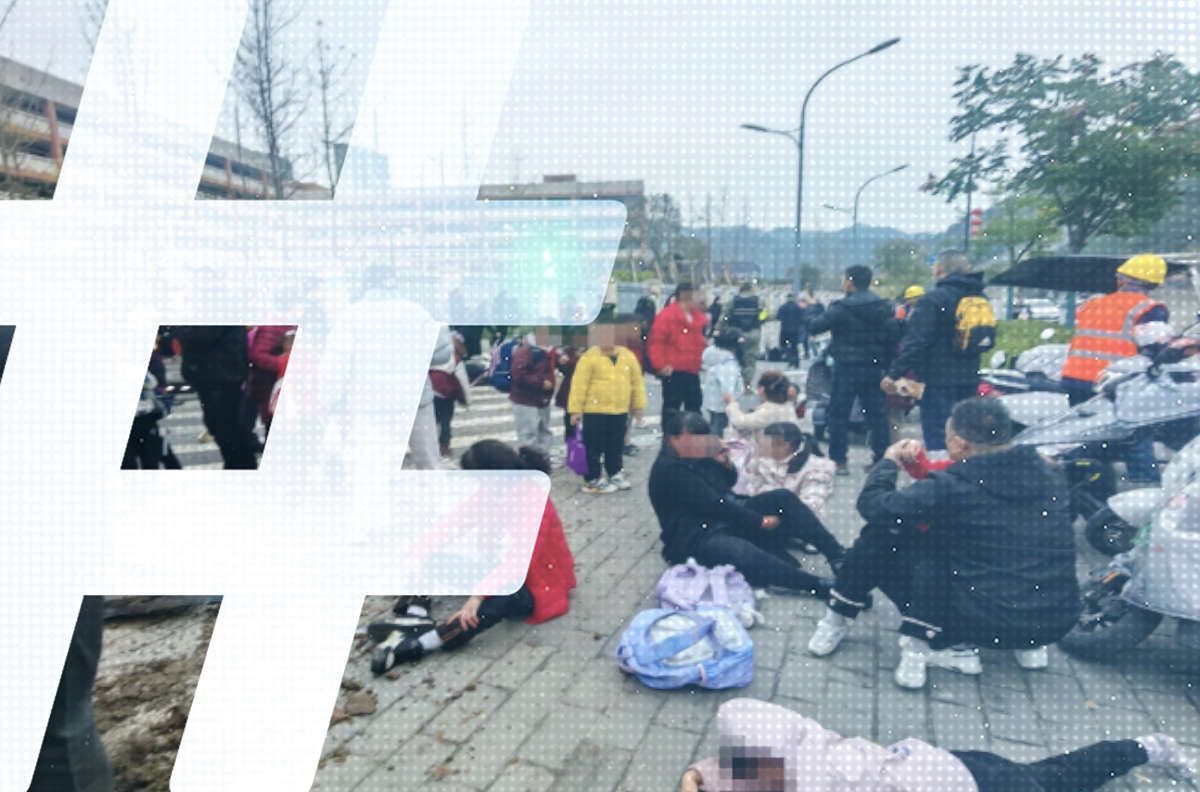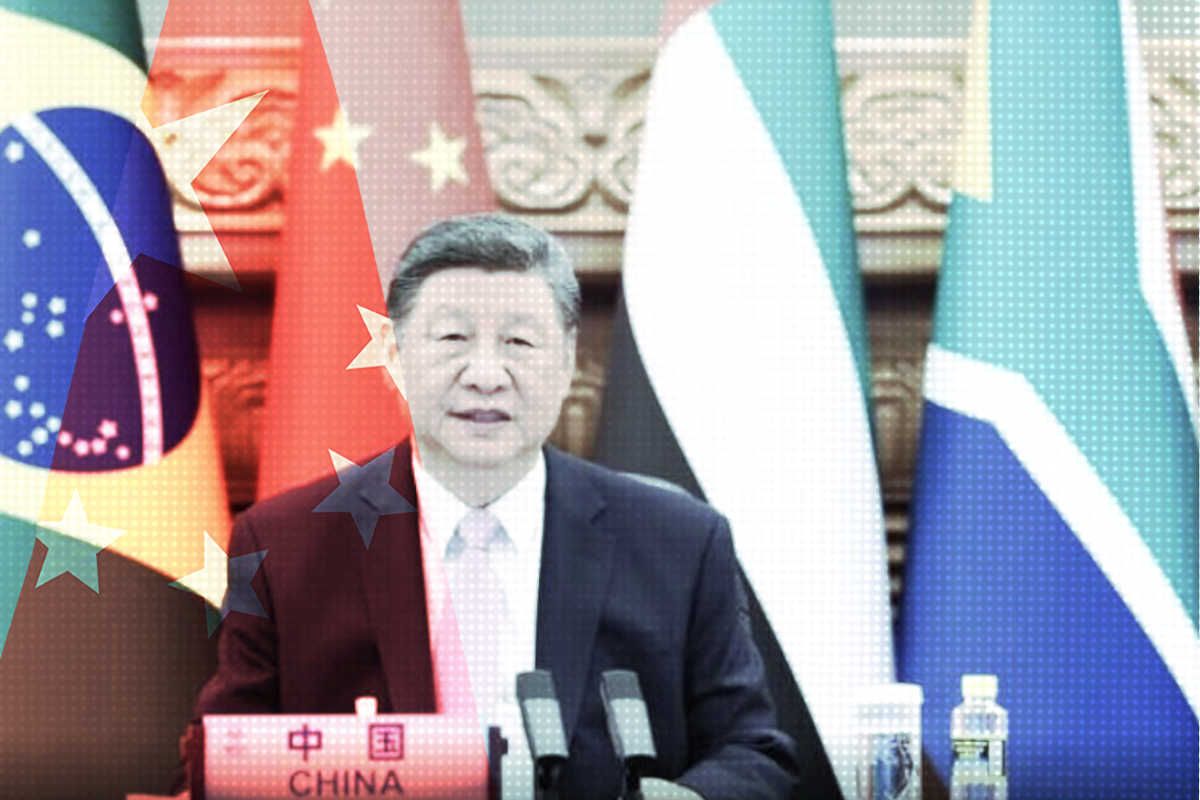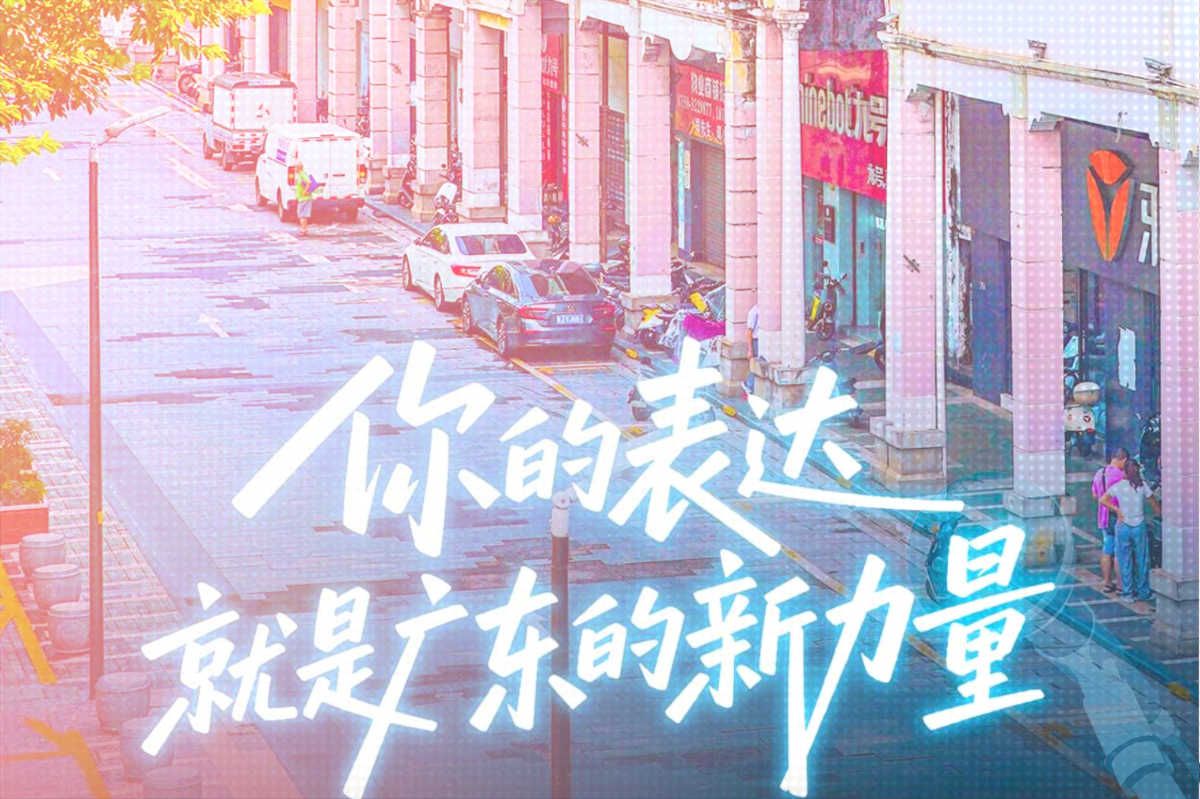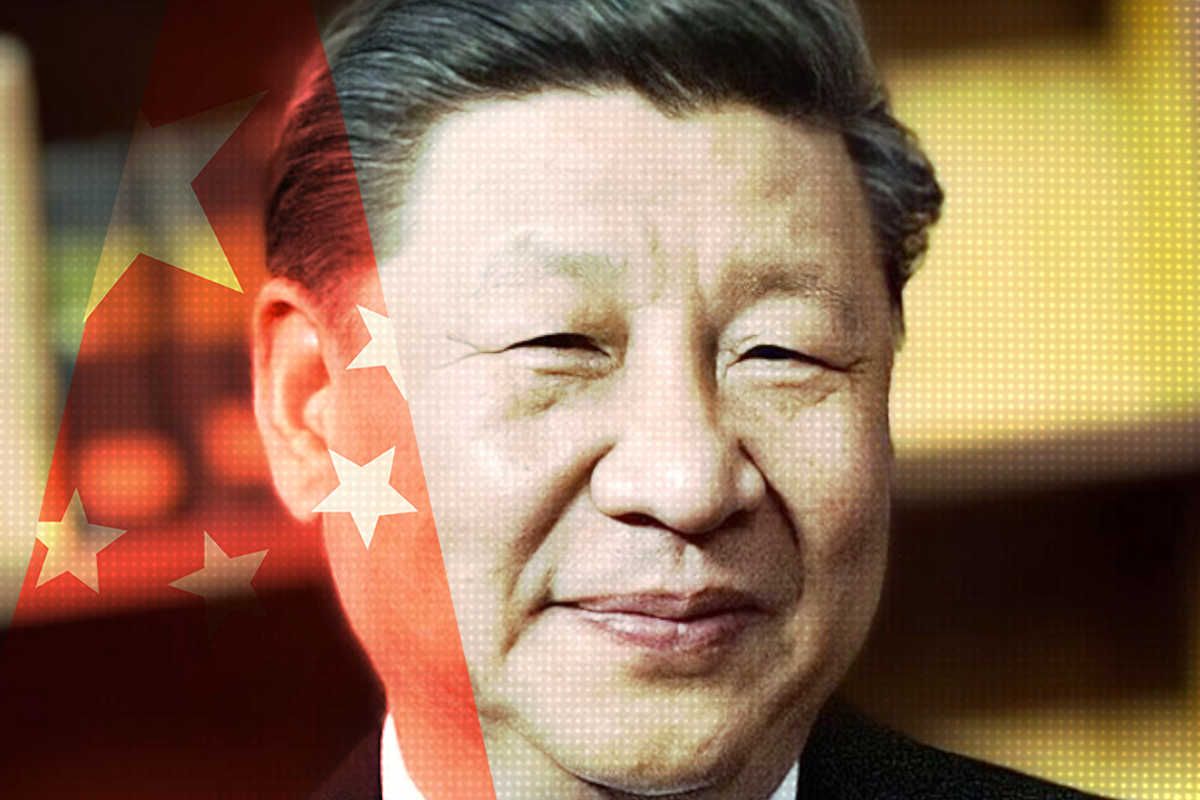We’re heading down the final red stretch to the 90th anniversary of the Chinese Communist Party. In light of this important anniversary — if you don’t think its important, just look at the way it has affected everything and everyone from film to new media — we’ll be posting a series of pieces in the coming three weeks on the politics and culture of “red.”
One of the big events of the anniversary, in addition to the unctuous propaganda blockbuster film “The Founding of the Party,” will be the airing over ten days on China Central Television of “90 Years of Red Songs” (红歌90年), a special official feature documentary, or zhuantipian (专题片), featuring more than 170 “red classics.” These will be sung by a dizzying parade of Chinese stars, including Peng Liyuan (彭丽媛), the wife of vice president Xi Jinping (习近平), who is widely presumed to be China’s next president.
To prepare you for this heady mix of politics and performing arts, we begin with a partial translation from the latest edition of Southern Weekend, which deals with the relatively recent concept of the “red song” and walks through the history of Party performing arts in China.
Red songs are “red” once again
Red songs are “red” [popular] once again. As for existing red songs, a program called “90 Years of Red Songs” will be aired on China Central Television Channel One before and around the 90th anniversary of the Party; as for newly-created red songs, 36 “Singing China” songs gathered, selected and produced over the past year or more have been rolled out on major television and radio stations across the country since May.
Beginning on June 2, 2011, the days-long process of recording “90 Years of Red Songs” began in Studio 9 of China Central Television. Up to this day, this is the largest-scale program of its kind, under the principle direction of the Central Propaganda Department, which put together the team two months earlier.
Zhu Hai (朱海), who is responsible for selecting material for “90 Years of Red Songs,” took on the job two months ago. This performing arts special documentary film (文艺专题片) to commemorate the 90th anniversary of the Party is made up of 10 episodes, and will be run over 10 days before and after July 1. “90 Years of Red Songs” will have two principal parts, interviews and performances. The scale of the performance lineup is clear at a glance. [It includes such] mainland singers as Wang Kun (王昆), Guo Lanying (郭兰英), Li Guangxi (李光曦), Yu Shuzhen (于淑珍), Yin Xiumei (殷秀梅), Yan Weiwen (阎维文), Mao Amin (毛阿敏), plus Song Zuying (宋祖英) and Peng Liyuan (彭丽媛). Additionally, Zhang Mingmin and Andy Lau (刘德华) will represent the Hong Kong Special Administrative Region in singing red songs.
Interviews [and special appearances, retrospectives] will include Nie Er (聂耳), the composer of the “National Anthem,” Cao Huoxing (曹火星) (“Without the CCP There is No New China”), the ancestors of first-generation New China musician Jie Fu (劫夫) (“We Travel on the Great Road”), various classic figures from different historical generations, for example the Sister Heroes of the Grassland, and former comrades of Lei Feng (雷锋) and his group leader, the son of “Iron Man” Wang Jinxi (王进喜), the daughter of Kong Fanshen (孔繁森), little heroes in the fight against the [2008 Sichuan] earthquake, etcetera.
Altogether, 170 songs were chosen for the film, showing the 90-year journey of the Chinese Communist Party. “All of the songs are red classics passed down to us,” says Zhu Hai.
The vast majority of the songs chosen are emotive in character, chosen for their eulogizing quality. For example, “My Mother Country” (我的祖国), “Let us Row Our Oars” (让我们荡起双桨) . . . etcetera. And, “Those slogan-like songs were so quickly forgotten,” says Zhu Hai. “Red songs are the voice of the mainstream,” said Zhu Hai, explaining the principle in selecting songs.
[In several paragraphs, the report explains the process and criteria for selection of 36 new red songs]
As early as July 2008, Chongqing kicked off red singing for the first time, the Party committee and government [of Chongqing] sending down [a document called] “Opinion on Widely Carrying Out Programs to Sing and Disseminate Red Classic Songs” (关于广泛开展红色经典歌曲传唱活动的意见), which stipulated that the whole city should take part in mass [red singing] cultural events, with the red singing theme of: “Singing of the goodness of the Party, the goodness of socialism, the goodness of economic reform and opening, the goodness of the People’s Army, the goodness of the masses, and the goodness of the Great Motherland.”
This is seen as the point from which the idea of red songs swiftly spread. Song Xiaoming (宋小明), deputy director of the Chinese Music Literature Association, said that the saying ‘red song’ was only introduced in recent years. In previous decades they were always called the ‘main theme’ (主旋律). In recent years, red song clubs (红歌会) in Jiangxi and other areas gradually has some influence [but] focused on classic historical red songs. Later, the Party secretary of Chongqing, Bo Xilai (薄熙来) raised the idea of not just singing red songs, but also creating red songs. So by the time the 90th anniversary of the Party rolled around, the term “red song” was established. Red songs encompass six aspects — the goodness of the CCP, the goodness of the Motherland, the goodness of socialism, the goodness of economic reform and opening, and the goodness of the People’s Army — essentially embracing the entire political life of the Chinese people.
There are now more and more street performances of red songs. Promoted from a number of quarters, red songs are again redding up [becoming very popular] (红起来了).
What are “red songs”?
Music critic Jin Zhaojun (金兆钧) believes that the term “red songs” very possibly comes from a series of “red classic” performances he helped to curate. When a performance of the ballet version of “White Haired Girl” was being prepared for Beijing in 1995, the sponsors invited Jin Zhaojun as an advisor. Jin Zhaojun’s suggestion was that they might as well bring back “Red Detachment of Women” and “The Long March Chorus” too, that since the political climate was right a performance would be easier to put on [packaged all together under this “red” theme].
When they promoted [the performance] the concept of “red classics” came up, and the warmth of the reception was beyond their expectations.
Jin Zhaojun tends to believe that “red songs” should point specifically to “red classic” songs and dramas created with Mao Zedong’s “Speech to the Yan’an Forum on Literature and Art” (在延安文艺座谈会上的讲话) as the guiding ideology. Which is to say that only those “red songs” emerging after May 1942 are truly “red songs.”
“It’s not only songs that praise the Party, praise socialism and praise leaders that belong to the ‘red songs’ [genre]. [Songs] praising the People’s Army, praising workers, praising the Motherland and one’s home actually also should be considered ‘red songs’,” Jin Zhaojun said.
Jin Zhaojun is the same age as [the famous writer] Wang Shuo (王朔). Owing to his complicated family background, it was only in 1982, at the age of 24, that he managed to enter a performance troupe. Even this being the case, when he hears “red songs” from those times, “it whips up recollections more of my youth, not a certain ideology from a specific period.” As a professional music critic, he is very clear in advocating a clear recognition of the artistic value of “red songs.”
“When social tensions are fierce, and opposing forces are dug in, songs are always able to whip up people’s emotions. And it’s precisely at such moments [of tension] that people come together in song. It’s the same all over the world,” Jin Zhaojun said. “La Marseillaise,” which emerged from the French Revolution has been passed down to the present day, and has already become a symbol of France. When America opposed occupation by the British and fought their war of independence, the patriotic song “Yankee Doodle” passed across the whole country.
Talking about “red songs,” Song Xiaoming of the Chinese Music Literature Association says frankly: “Insofar as it is sanctified by usage, this term ‘red songs’ is admissible. But speaking more strictly, this term is not too scientific, and its hard to expand. For example, what should we call a song that praises environmental protectionism?”
Song Xiaoming consciously created his own song called “Red and Green.” The song goes: “You endowed me with the color red, and gave me a healthy start . . . You endowed me with the color green, and let me wing off freely.”
Many music critics believe that the revolutionary songs that emerged during the October Revolution in the former Soviet Union, during the Great War [of the Soviet Union against the forces of fascism], and in the era of the building of socialism can be regarded as Soviet “red songs.” But Song Xiaoming emphasizes that “red songs” are without a doubt a cultural phenomenon unique to China (中国特色的文艺现象): “Taking for example the songs of the time of the Great War, the content is always related to love, does not flinch from the cruelty and mercilessness of war, does not flinch from the fact that soldiers are marching off to battle with heavy hearts. As the guns fire days after day, the soldiers sing of their own loved ones. With love there is hope.”
Song Xiaoming believes that the truly Chinese character in Chinese “red songs” lies principally in their clearly political tonality. This of course is because China’s historical circumstances are so desperate, and soldiers must overcome many more difficulties.
ABOVE: On July 23, 1975, 50,000 farmers gather in Acheng County, Heilongjiang province, to watch a dance drama of the revolutionary classic White Haired Girl. Photo by Li Zhensheng (李振盛).
Where do red songs come from?
If you trace back across the veins of Chinese revolutionary history, then songs of the May Fourth Movement such as the “Patriotic Anthem Commemorating May Fourth” (五四纪念爱国歌) and “National Humiliation” (国耻), and songs like “Three Disciplines and Eight Attentions” (三大纪律八项注意) and “Striking Down the [Western] Powers” (打倒列强) coming out of the period of the first domestic revolutionary war (1924-1927), which appropriated foreign melodies and substituted [Chinese] lyrics, should also be regarded as “red songs.”
The chief reason why Jin Zhaojun stresses the importance of the Yan’an Forum on Literature and Art as a nodal point is because it was from that point on that artistic creation, including music, fell entirely under the leadership of the Chinese Communist Party.
In the first phase [after Yan’an], folk songs were used as material and red content was added. For example, The East is Red took the original lyrics, “Riding a white horse, wielding a foreign gun,” and replaced them with, “The east is red, the sun is rising.”
In the second phase, nutrients were drawn from folk songs to fuel original creations. “For example, Jie Fu on the one hand gathered together local folk songs, to the point where his stomach swelled with folk songs,” said Jin Zhaojun. Jie Fu’s songs sound so familiar upon hearing, but you can’t say they are plagiarized, nor can you say they are adaptations. That [says Jin Zhaojun] is the product of his rich experiences and his closeness to the masses.
After 1949, that group of musicians of which Jie Fu and others were representative entered a period of further creation, some going off to study in the Soviet Union or returning to colleges and universities to further their study. Western musical methods were widely adopted [during this time]. In the 17 years before the Cultural Revolution, the creation of “red songs” reached a new peak. At that time, “red songs” were in fact “popular songs” sung spontaneously by the people, and were of three principal types — those emerging during the Korean War against America, simply marches; lyrics in a domestic folk song style; then there were the songs in frontier ethnic minority style, from a group of artists of which Lei Zhenbang (雷振邦) and Luo Nian (罗念) were representative.
In fact, as early as the Anti-Japanese War, Xian Xinghai’s (冼星海) “Yellow River Cantata” employed artistic methods outside of the grand chorus style traditional to Chinese music. The facts showed that ordinary Chinese could easily understand and accept [these new forms]. But the further development of professionalism [in music] would wait until after 1949.
These developments could be seen clearly in the creation of musical dramas. The musical drama “White Haired Girl” (白毛女), created in 1945, clearly borrowed its form and style from Western musical dramas, but the hints of Chinese operatic tradition were strong . . .
[Article talks about how these styles developed up to the Cultural Revolution]
In the midst of the Cultural Revolution, the arts languished. Jin Zhaojun is in the habit of making the half joke that “The Great Proletarian Cultural Revolution is Just Good” [a Cultural Revolution-era chorus song] is China’s last march. “It’s just good, it’s just good, it’s just good . . . That’s just madness, totally beyond reason.”
Jin Zhaojun makes it a point to emphasize that so long as the creator’s feelings are sincere, political [objectives] will not harm artistic ones. “Particularly for my generation, we cannot, no matter what, forget Li Shuangjiang’s (李双江) songs such as ‘The Red Star Leads Me to Struggle‘ (红星照我去战斗), ‘Hymn to Beijing’ (颂歌) or ‘I Love the Wu Zhi Mountain, I Love the Wan Quan River’ (我爱五指山,我爱万泉河) and the pleasure they brought us.”























